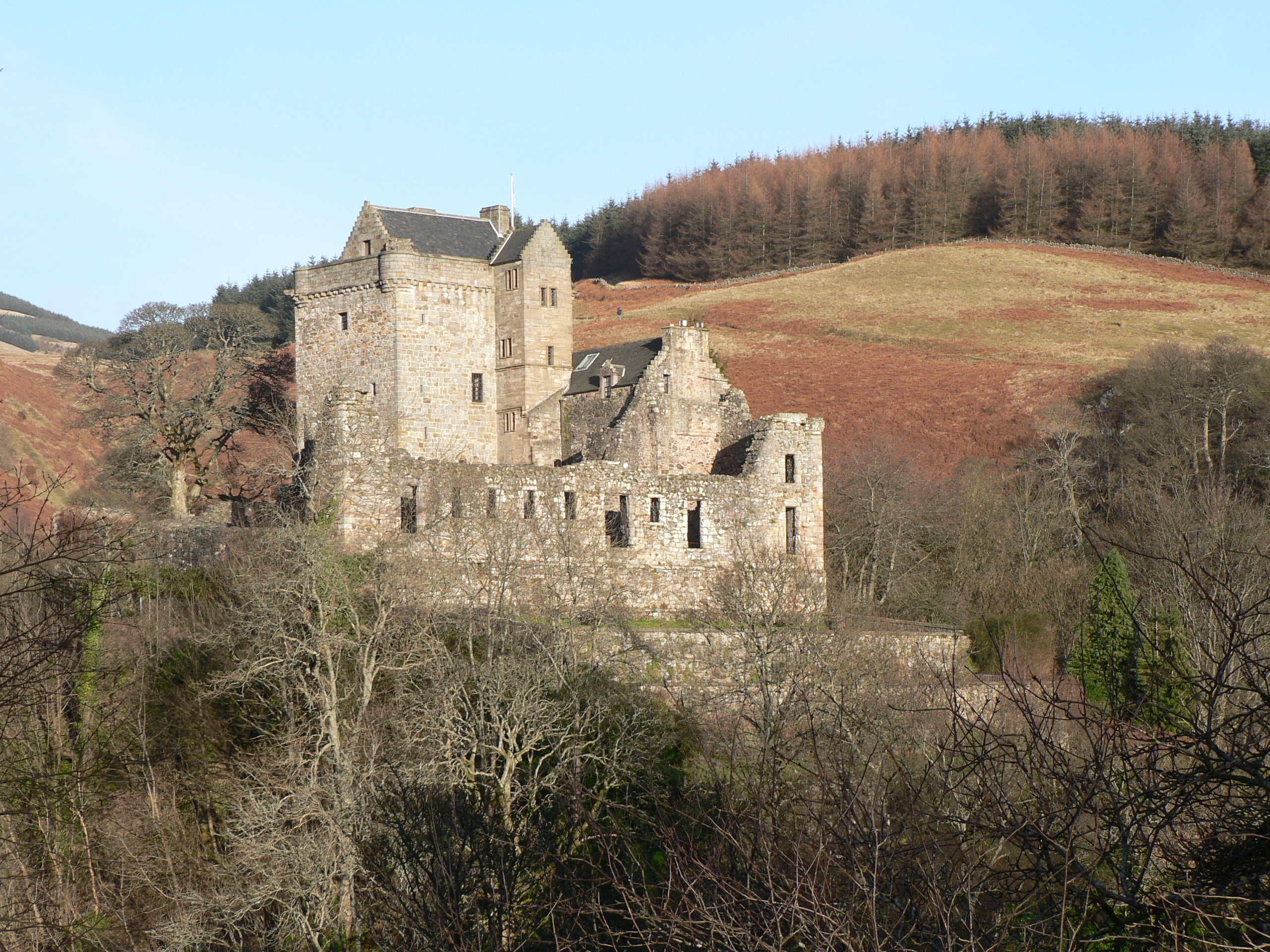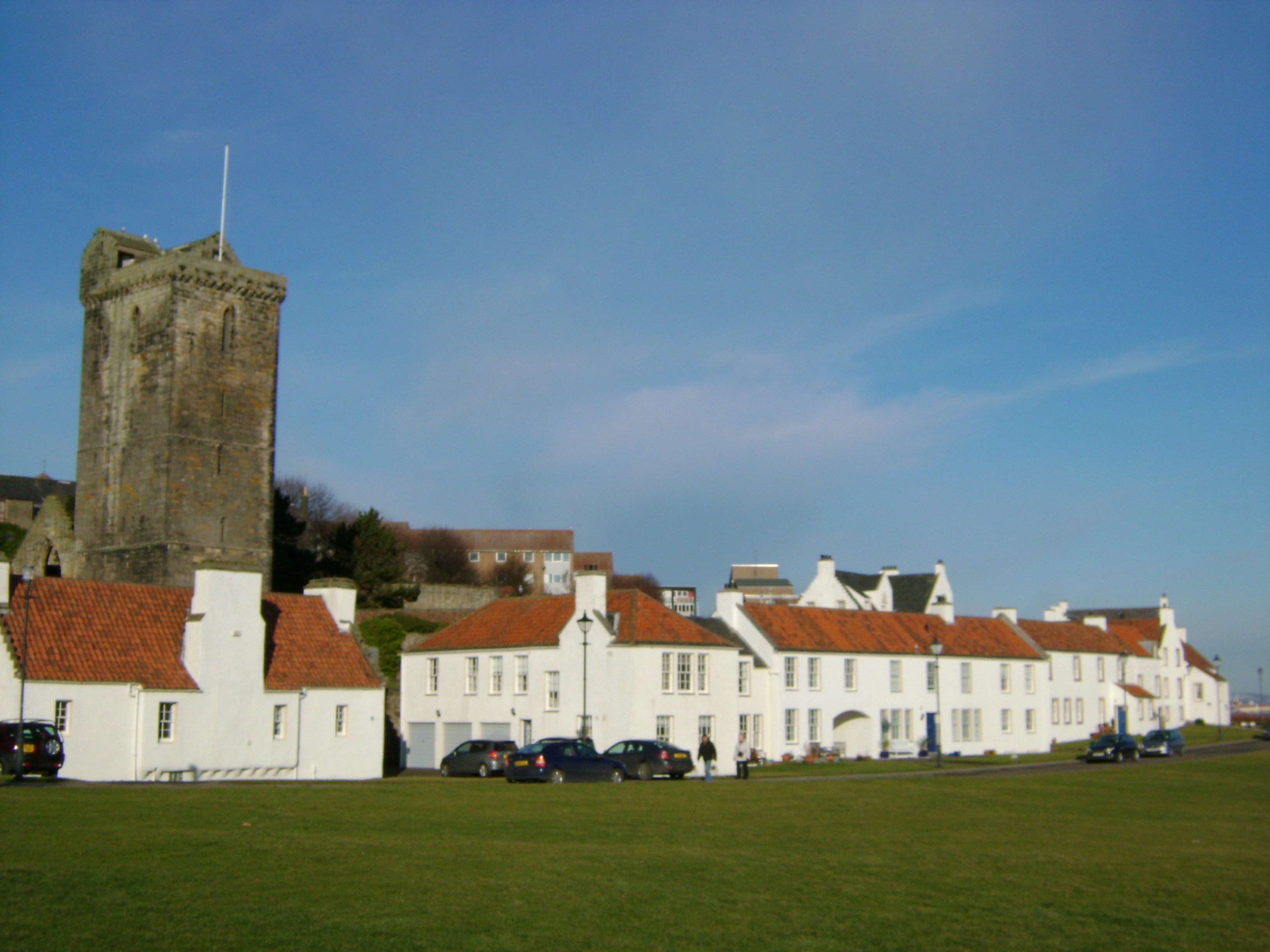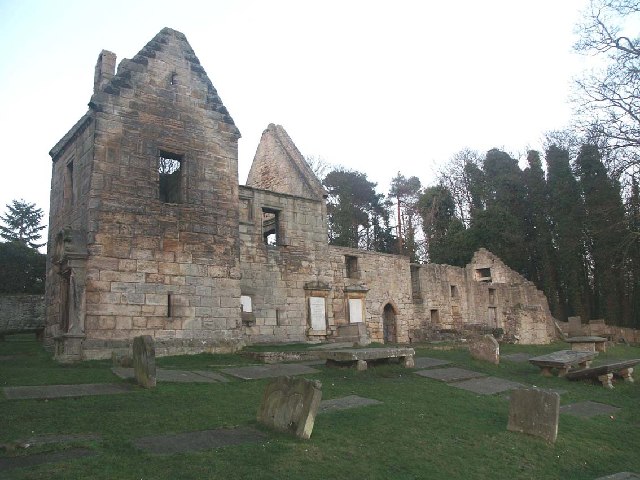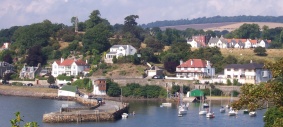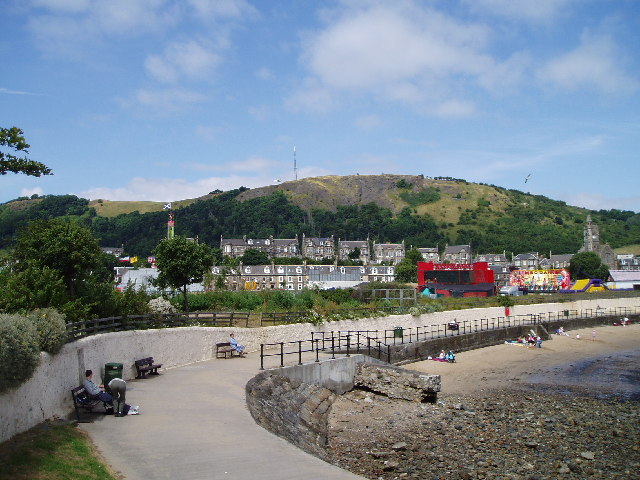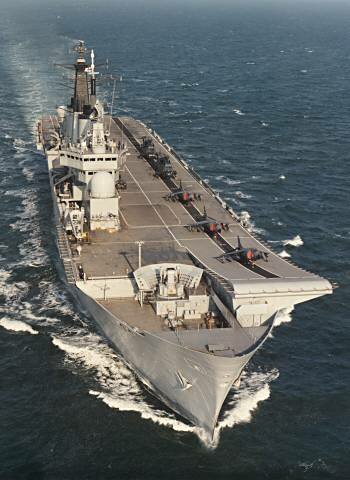Welcome, walk followers, to the latest edition of "Stuart & Ian's Excellent Adventure". This week, thrill as our intrepid explorers traverse wild terrain, marvel as they display their ferocious fish and chip eating skills, and get ready to use merely the edge of your seat as the dashing duo use the full range of their wits to outfox a herd of killer cows...
This was the first decent walk in a couple of weeks, work had sadly intervened last week to ensure that the walking which was done was, to use a skiing analogy, of piste. Still enjoyable though, but not quite as scenic as the coastal path we mastered during the latest leg, which saw us leave Elie to finish up in Crail. So, the facts and figures for this leg (the obligatory screenshot of the app I use will follow):
Distance: 10.81 miles
Time: 3h, 37m, 22s
Speed: 2.9mph (the reasons for which will soon become clear!)
Calories: 978 (at least!)
Fish Suppers Consumed: 1 each
This was the most enjoyable part of the walk we've done thus far, despite my ongoing attempts to break my right ankle (yes, I turned my ankle over again, and yes, it hurt like a [expletive], and yes, I know I should take more care!). From start to finish, it was pretty much constantly spectacular, it was a bright sunny day, and the path clung to the coast, like a fat guy clings to his pizza discount card. It does have to be said though, once we got past Anstruther, the path became much less pathy, and more muddy fieldy. The last part of the path, on the approach to Crail was downright dangerous, being heavily overgrown in places, waterlogged in others (there were stepping stones, but they were also wet, a lot of them were in poor repair, and it was a bit hairy!), and the last couple of hundred yards before we found ourselves back on tarmac, were a smelly, slidy and very precarious mix of mud, more mud and sheep leavings. It's the first time I've really found myself thinking "this is bad...", especially when compared to the rest of the path.
 |
| St. Monans Church |
Anyway, on with the walk. We left Elie and it's multi-coloured houses and headed out to St. Monans. Like a lot of places in the East Neuk, St. Monans tends to be overlooked in favour of the Anstruthers of the world, which is a real shame, as it's a really pretty little village. Named after Saint Monan, who was an early Christian martyr, killed by marauding Danes during an attack on the Isle of May in the 9th century, the village got a big infusion of credibility in the early 14th century, when King David II of Scotland re-dedicated the chapel following his victory in battle, and his recovery from the wounds he suffered as a result, a recovery which he credited to the intercession of St. Monan. We walked through the graveyard of St. Monans' parish church, which in common with many little churches in the Kingdom, was very pretty, although I wasn't convinced by the graveyard finishing right on a cliff!
The number of interesting little churches we have passed on our walks has actually inspired me to undertake a little project, which I'm going to slot in during times we are not doing our 'official' walks. I plan to travel the Kingdom and see how many churches I can find, and then photograph them, with a view to making a little online collection of the Churches of Fife. I'm not of a religious persuasion, but I do like the architecture associated with churches, particularly the old ones (and St. Monans church certainly meets the criteria for being old - earliest mention of it goes back to the 14th Century), and I'm always looking for a project to keep me occupied, and this will hopefully help me not only improve my photography, but will help me find out a bit more about the history if the Kingdom.
 |
| Pitenweem | |
But, I digress. We walked through St. Monans, which probably hasn't changed much in the last few hundred years, and then set our sights on the little fishing village of Pittenweem. Like so many places in Fife, Pittenweem takes it's name from Pictish times. Meaning 'The Place of the Caves', the cave in question being St. Filian's. St. Filian was an Irish monk who came to Scotland in the 8th century. He is most famously known as the saint whose relic (apparently, an arm bone) was allegedly carried by King Robert the Bruce during the Battle of Bannockburn, which of course resulted in a home win for the Scots.
Pittenweem is your archetypal fishing village. The harbour is the hub of the village, with everything else radiating out from there and the fishmarket. What a lot of people don't realise is that for a long time there was a burgeoning secondary industry along the Neuk coast - salt production. All along the Neuk coast at one time, you could see salt pans of varying sizes. In the pre-industrial age, when water quality was still generally good, they would gather in volumes of salt water from the sea and lock it into the pan (which in this instance, describes a large but shallow body of water, constrained in some way). As the pans were shallow, the water would evaporate, leaving behind the salts. In St. Monans you can still see a windmill which was used to grind the evaporated salts down, prior to shipment.
Next up was Anstruther, home of the famous Anstruther Fish Bar, and historically, the home of The Beggars Benison.
Like the rest of the little coastal villages, the shoreline of Anstruther is made up of white walled, red roofed houses, which are decidedly Dutch or Belgian influenced. Back in 'ye olde dayes', the East Neuk was, for a time at least, a trading centre with Dutch and Belgian captains as they sailed up from England before heading back across the North Sea. These ships had red tiles as ballast, and once the locals realised that they would make an ideal roofing material, they became highly prized. This style of building can be seen all along the coast.
 |
| Anstruther Fish Bar. Unsurprisingly! |
The Anstruther Fish Bar is possibly the most famous fish and chip shop in Scotland, regularly being named the best in the land, and featuring in the final few of the best chippy in Britain contests. If you time it wrong, you can find yourself queuing for 40 minutes or more, but last night when we happened across it's door, there was, for the first time in my memory, no queue! With that in mind, it would have been rude not to avail ourselves of their award winning (and, if the press clippings on the wall are to be believed, approved by Royalty, and Tom Hanks) fayre.
Anstruther is also the former home of The Beggars Benison, which I actually have already mentioned in a previous blog, but I think they merit a recap! The Benison was a 17th century gentleman's club, which was devpted to 'the convivial celebration of male sexuality', according to it's charter. Unsurprisingly, the gentlemen in question were from the upper echelon of society, and would meet to drink, dine, sing bawdy songs, indulge in bawdy toasts, and indulge in various practices, which would generally involve the club's apparently significant stock of 17th century porn, or the visual examination of a local 'Posture Girl', who was always naked, and I would suggest it was a fair bet that the assembled gents looked with their hands as well as their eyes! The Benison also had an initiation ritual which was described in some detail by the club's Recorder. Like most private clubs of the time, details records of ceremonies and meetings were kept, with the records from The Benison now being kept at St. Andrew's University. The initiation ceremony involved
"[The new member was prepared] in a closet, by causing him to propel his Penis until full erection.
When thus ready he was escorted with four puffs of the Breath-Horn
before the Brethren or Knighthood, and was ordered by the Sovereign to
place his Genitals
upon the Testing Platter, which was covered with a folded white napkin.
The Members and Knights two and two came round in a state of erection
and touched the Novice Penis to Penis. Thereafter the special Glass,
with the Society's Insignia thereon and Medal attached, was filled with
Port Wine, when the new Brother's health was heartily and humorously
drunk, he was told to select an amorous Passage from the Song of Solomon and to read it aloud."
I'm fairly certain you wouldn't see that down the local golf course these days! As if there was any doubt left regarding the nature of the club, a typical extract from the club records shows:
"1737. St. Andrew's Day. 24 met, 3 tested and enrolled. All frigged.
The Dr. expatiated. Two nymphs [young girls], 18 and 19, exhibited as
heretofore. Rules were submitted by Mr. Lumsdaine for future adoption. Fanny Hill was read. Tempest. Broke up at 3 o'clock a.m."
Quite!
Having had our fill of fish and chips, we resumed our path, with the next stop being our target for the day - Crail. It was around the point where we were a mile or so outside of Anstruther that the path started to lose it's path-like hue, and become dirt road and field. It was an odd part of the walk, looking to the right, you saw the coast, the sea, some really nice views, whilst casting an eye left would see it witness, of all things, a piggery. Even had your eyes not alighted upon the field of porcine delights (including dozens and dozens of piglets, which are kind of cute, I have to say, and probably very, very tasty when transformed into bacon), your nose would have alerted you of it's presence. Although we didn't know it yet, the pigs were not to be our only encounter with farm animals!
 |
| "You lookin' at me pal?" |
There's really not much other than fields and shore between Anstruther and Crail, so we did what we were out to do, and walk. As we found ourselves getting closer to our target, the path narrowed, and involved a little climb to go through a gap in a fence to allow us to continue. It was here we encountered what may have been our nemesis, in a decidedly bovine shape.
Cows seem to be becoming a recurring theme for my walks, I was out last week walking around Loch Ore with my friend Carol, when we happened across a herd of escaped cows. I knew there were cows in the area, but was expecting them to be safely ensconced behind a fence. This proved not to be the case then (much to Carol's chagrin), and so was last night. We looked up and saw a not insignificant volume of cattle not only block the gap, but it looked for all the world like they had set up sentry positions to hinder any attempts at progress. Unperturbed however, we soldiered on, resolute in our belief that, if it came to it, we should just about manage to win a battle of wits with the assembled throng of steak on the hoof.
And so it came, that using our combined powers of logic, diversion, strategy and ability to quickly determine the weaknesses of domesticated ungulates, that we, unlike the Balrog, did indeed pass, and made our way along the increasingly precarious path to Crail.
It was at this point that the path essentially stopped being a path and became more of a muddy track, culminating in, as I have already mentioned, the quagmire that was the final section of the path taking you into Crail. It's a shame, because up until that point, it was an absolutely glorious walk. However, we made it, and got to the bus stop in time for the next bus to take us back to our starting point. Having congratulated ourselves in our outwitting the cows, we found ourselves sharing a bus with a group of people who would struggle to outwit an amoeba, never mind a complex organism. Their main means of communication appeared to be the incoherent grunt, oft favoured by those of limited intellect, the frequency and volume of said grunts often being in direct proportion to their stupidity. Every now and again, you would make out at word which seemed to be more or less English, it was almost as if they were trying to be actual people. I guess they should be commended for the effort. One of the group did managed to construct enough of a sentence to enable use to ascertain that he was trying to effect the transaction of some sort of substance, the measuring of which required scales, and consumption of which required 'skins', with the value of said transaction apparently varying from £50, to £70 before, it would appear, settling on £60. If anyone ever wondered why the call it dope, I would present to you, ladies and gentlemen, exhibits 1 to 4, as seen, and heard, on the bus last night.
Join us again next time out, as our intrepid explorers undertake the longest single leg of this journey of discovery - the 13 miles between Crail, and the ancient and historic university town of St. Andrews. As scary as it is, I can't wait...
